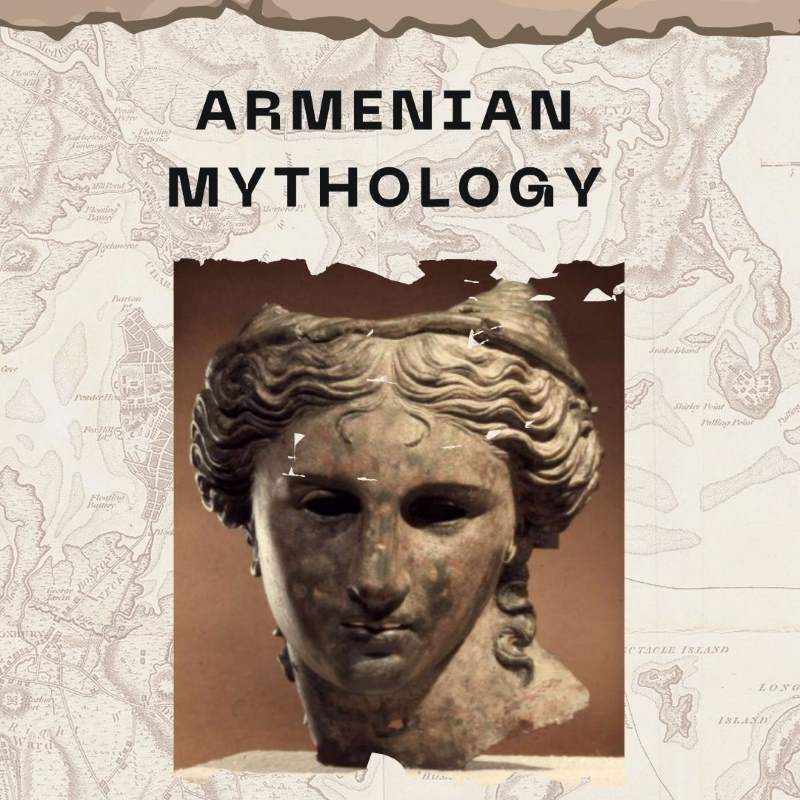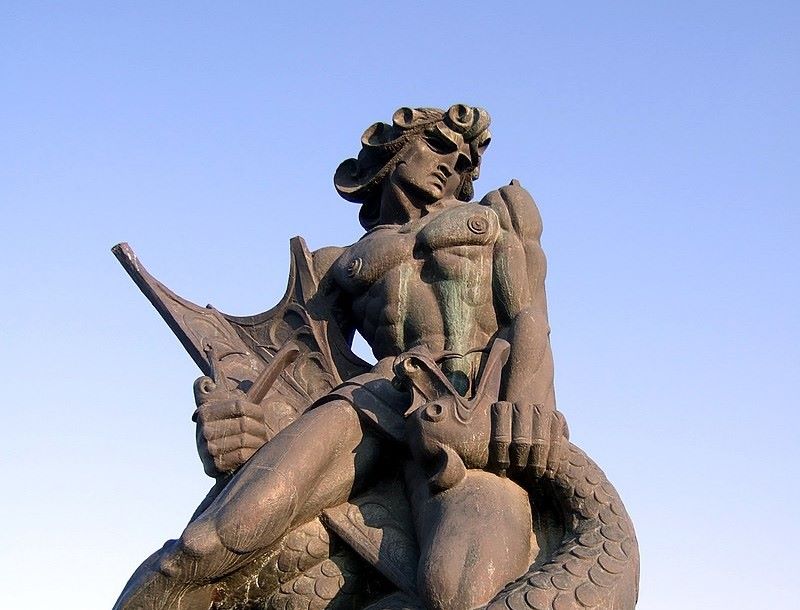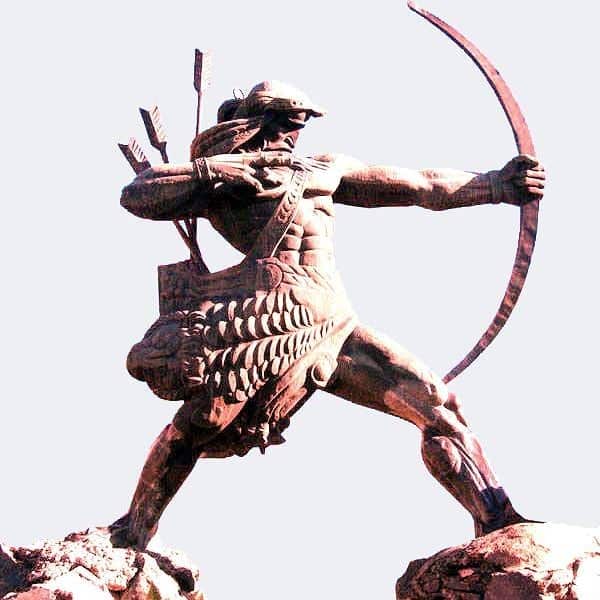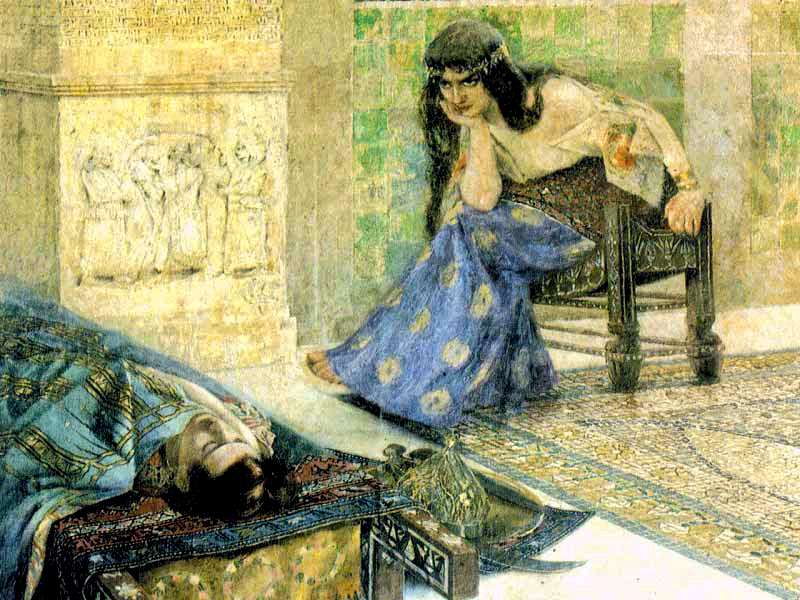
Armenia’s tourism committee has recently announced that the bronze head of the state of Goddess Anahit kept in the British Museum will be exhibited in Yerevan in September 2024. Isn’t it a good occasion to speak about Armenian mythology?
Armenia is known as a nation that was the first to adopt Christianity as a state religion. However, there is yet another big part of its heritage that goes beyond 301 when Christianity was adopted. There is a rich Armenian mythology rooted in traditional folklore and ancient traditions.
The unique monuments and traces of pre-Christian heritage are still present in Armenia. One can witness them when traveling to Garni, the largest pagan monument in the region. In addition, dozens of pieces found during the archeological excavations are in the collections of local museums.
In general, Armenian mythology is an assimilation of the Zoroastrian religion, Armenian beliefs, and Hellenistic culture. This blog will be about Armenian gods and goddesses, myths, and legends.
Early Armenian Gods and Goddesses

The pantheon of gods changed over time, but it can be divided into 3 stages. One was the Urartian period in 6-10 centuries BC. Subsequently, there is the Zoroastrian period and Hellenistic period.
There are some gods believed to be native Armenian gods. They were worshipped during the earliest period or Proto-Armenian period of history. One of them was Areg, the god of the Sun.
One of them was Areg, the god of the Sun. Astghik is a goddess of beauty and love. Her name is derived from the Armenian word “astgh” which means a “star”. By the way, the Vardavar holiday that is so popular in modern Armenia was celebrated during the pagan period. It was a holiday when people honored the goddess Astghik and poured water on each other. After adopting Christianity, Vardavar is celebrated along with the Feast of the Transfiguration.
Other popular gods were Ayg, the goddess of dawn, Amanor, the god of the new year, and Tsovinar, the goddess of waters.
Zoroastrian Period
Zoroastrianism came to Armenia during the Achaemenid Empire around the 7th century BC. Before the adoption of Christianity, it was the most widespread religion in Armenia.
The Armenian pantheon was led by a powerful trinity:
- Aramazd, the father of gods. He was the supreme god of the ancient Armenians, the creator of heaven and earth, and the father of all gods. His sanctuary was located in one of the cult centers of Ancient Armenia, Ani Kamakh.
- Anahit, the mother goddess of fertility. When engaged in any business, the Armenian kings sought protection and health from Anahit. As a maternal deity, Anahit was the sacred embodiment of motherhood, harvest, and fertility.
- Vahagn, the god of war, bravery, and victory. In Armenian mythology, Vahagn is a young man with fiery hair, a flaming beard, and sunny eyes.
The patron of education, eloquence, science and learning, and the arts was Tyr. He was considered a diviner of people’s destinies and an interpreter of dreams. The main temple dedicated to him was located near ancient Artashat.
Vanatur was the ancient god of hospitality, celebrated during the New Year.
In fact, there is a connection to ancient mythology that persists through names in modern Armenia. Many people in today’s Armenia proudly bear the names of pagan gods and goddesses, keeping the rich Armenian heritage alive.
Armenian Heroes

Although there are many legends about Armenian heroes, two of them are the most popular. One refers to Hayk Nahapet, a legendary hero, and ancestor of all Armenians. The other is about Ara, the Handsome. These tales of heroic struggles and timeless love have echoed through the ages. Each legend unveils a chapter in the captivating story of ancient Armenia.
Hayk Nahapet
Legendary Hayk is a founder of the Armenian nation. His story is popular thanks to the mentions by prominent Armenian historian Movses Khorenatsi in his book “History of the Armenians”. However, fragments of the legends can be found in Armenian folk tradition and works of other authors.
Movses Khorenatsi describes Hayk as a descendant of Noah. Armenians call their country “Hayastan” which derives from Hayk. One of the most famous episodes of Hayk’s life is his battle against Babylonian king Bel. The latter declares himself ruler of the world and forces others to worship him. Bel decides to march against Hayk because he did not obey his order to come and live under his rule. Hayk forms his own army near Lake Van and says he will kill Bel not willing to become his slave.
At the height of the battle, Hayk spots Bel on the hill crosses the river, and shoots him with an arrow. Seeing Bel’s death, his army flees.
Ara the Handsome

One of the famous Armenian legends is the tale about Ara, or Ar, the Handsome. The legend says the Assyrian queen Semiramis falls in love with Ara and proposes to him. Ara’s steadfast refusal sparks her anger, and she gathers the army to march against Armenia. Although Semiramis or Shamiram in Armenian orders to capture Ara alive, her army killed him during the battle. She took his body and tried to raise him from the dead. As Armenians advanced, she spread a rumor that she brought Ara back to life to stop the war.
Ara embodies the beliefs of pagan Armenians about a dying and resurrecting god. In fact, he symbolized the awakening of nature and family virtue. In addition, there are many toponyms like Mount Ara and Mount Aragats that show how popular the cult of Ara was.
